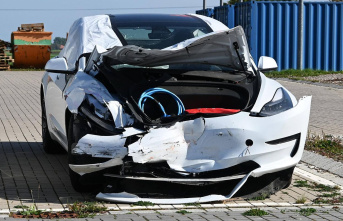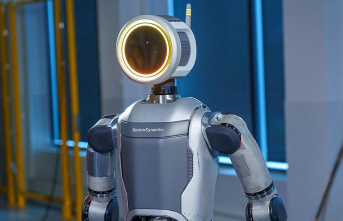Permira, a private equity manager which manages investments for 200.000 million euros, wants to get the boots by selling or taking Bag the iconic british firm footwear Dr Martens. The signature is usually between five and seven years in companies in which it comes to rentabilizarlas and sell them. Bought Dr Martens in 2014 for 380 million euros. Now expect to get between 1,000 and 1,300 million euros for it. Another investor group, american Carlyle, appears in the pools as one of the potential buyers.
a billion is a substantial figure considering that it does not seem to have much appetite for acquiring companies of retail trade in the United Kingdom right now. However, the shareholders of Dr Martens can boast of excellent figures as a result of its policy of expansion of its own stores to increase direct sales, to the time that it begins to enhance also the digital channel. All with the goal of not relying so much on the less profitable operations wholesale through third parties, that are still contributing more than half of total sales.
In parallel, after getting the control, Permira raised significantly prices of sale to the public. Its flagship product, the boots 1460, cost between 139 and 239 pounds (between 163 and 280 euros) and, in the words of some consumers, reducing perhaps too much the costs of production. Although Dr Martens began to be manufactured in China in 2004, this trend was accelerated by the new controlling shareholder and now only a small part of the production comes from the traditional factory in Northamptonshire, in central England.
Permira want to take a moment high of a mark which, despite the myth that surrounds it as a product a fetish, has a long tradition of a tendency to slide. The boots they wore The Who or the Sex Pistols in the sixties and seventies of the last century, an icon of the punk and working class british, famous for the eight pairs of metal eyelets bound their endless lace-up, the same fall into the oblivion that is back in fashion.
Good results
The best argument Permira to find a buyer is the transformation that he has given in the account of results of the firm. In the past fiscal year, sales increased by 30% and amounted to 455 million pounds (532 million euros). The gross result of exploitation (ebitda) increased by 70% (up to 85 million pounds). The direct consumer sales grew 42% and wholesale operations up 23%. The brand now has 109 stores throughout 63 countries, after the opening of 24 stores in 2018, including four in the united States, six in Japan and one in Hong Kong. "Our goal is to continuously improve our engagement with consumers and generate a financial growth that is sustainable, while maintaining the authenticity of the brand and our proposal of a self-expression rebel", say company sources.
The rebellion has been one of the flagships of the consumers of Dr Martens, a pair of boots that are not exactly conventional. But that defiance also appears to be expressed at the time of the complaints. A comment seemingly innocent sent by a client disappointed elicited a couple of weeks ago a bunch of criticism from consumers that believe that the brand no longer is what it was. And attribute this change mainly to the fact that now their boots are manufactured mainly in China and with materials, they say, are of poor quality. They report, for example, that the thick soles are no longer attached with nails, but stuck together with glue
The storm started with a complaint in the section of consumer's Guardian newspaper: "I bought my daughter a pair of boots Dr Martens platform (Jadon) at Christmas of last year; a considerable investment of 170 pounds, but he deserved the penalty, I thought, because they are famous for their great durability. In less than six months appeared holes, including large slits on top of the heels". The complaint was accompanied by a photo of one of these rajas and the explanation of the Dr Martens never replied to his attempts to give him explanations. In a single day, the newspaper received almost 300 messages on the topic, the vast majority of them denouncing the progressive loss of quality of the product.
a Few days later, the newspaper published the point of view of the company: "Although we produce 11 billion pairs of shoes a year and we have a ratio very low damage (0,5%), we accept and acknowledge that we do not always do well. In these cases we strive to understand what has happened and learn from it," conceded the chief executive, Kenny Wilson. Geert Peeters, executive director, ensures that the production standards have not changed and neither have the materials. The executive insists that the manufacturing methods are the same as they had on April 1, 1960, the day on which the famous boot 1460 was baptized using the figures from that historic date. And emphasises that the relocation of production to Asia began in 2004, and not with the arrival of Permira in 2014.
it Is precisely the presence of Permira which encourages the suspicion of the fans of Dr Martens, as they see the shareholder as a financial company interested in improving the performance of the company to sell it at the best possible price. "Our growth figures are driven by investment", are answered by the executives of Dr Martens. "Our operating expenses grew 30% last year and, since the arrival of Permira, the investment has been higher than the revenue growth. And we just make a big bet in our factory in England in order to double production," they conclude.
Birth by accident
The boots Dr Martens were born by accident: that suffered by a German soldier, the doctor, Klaus Maertens, when in 1945 he broke his foot while skiing in Bavaria during a military leave. Maertens ended up inventing a boot much more comfortable than the army, with soft leather and soles with air acting as a shock absorber. In 1947 he began to commercialize his / her invention with the help of a former colleague, a university, a luxembourger named Herbert Funck. They were so successful that in 1952 they opened their own factory and in 1959 began to expand in the world.
The soles of air drew the attention of Griggs, a british manufacturer of footwear founded in 1901. Griggs bought the patent in 1960, changed the name of Dr Maertens by Dr Martens and released on April 1 of that year, that would be your icon eternal, the boot 1460, which remains today as it was almost 60 years ago.
Date Of Update: 28 December 2019, 14:00







